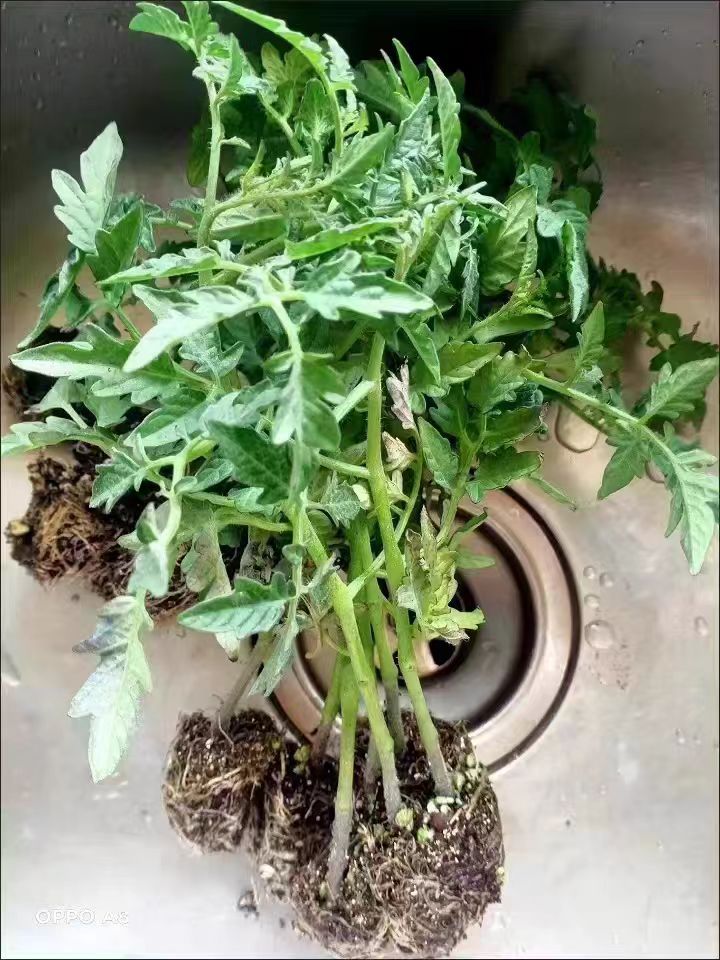After the cherry tomatoes in our home potted plants bear fruit, many people may wonder how to care for them to ensure abundant and high-quality fruit, and whether they can bear fruit again the next year. Don’t worry—here’s a detailed guide to specific management practices and next-year maintenance tips.
1. Fertilization Management
After fruiting, prioritize proper fertilization. Reduce nitrogen fertilizer use, as excessive nitrogen promotes vigorous leaf and stem growth, which competes with fruits for nutrients. Focus on supplementing phosphorus and potassium. You can apply fermented organic fertilizer solutions (such as soybean cake water or fish intestine fertilizer) every other week, or spray diluted phosphorus-potassium fertilizer on the leaves. When fertilizing, pour the solution slowly along the edge of the flower pot to avoid direct contact with the roots. After fertilizing, water lightly to prevent root burning. When the fruits start to change color, spray a calcium-containing solution to prevent fruit diseases.
2. Watering Techniques
Watering is equally critical during the fruiting period. Cherry tomatoes are sensitive to water, so keep the potting soil moist but not waterlogged. Follow the principle of "watering thoroughly when the soil surface is dry." Avoid alternating dry and wet conditions, as this can cause fruit cracking. In hot summer, water in the morning or evening, and mist the leaves to increase humidity. Never water at noon under direct sunlight, as extreme temperature differences can damage roots. If water accumulates in the pot during rain, drain it immediately to prevent root rot.
3. Pruning and Thinning
To promote better fruit development, regularly prune the plant and thin the fruits. Remove excess side shoots on the main stem as early as possible, leaving only a few strong lateral branches to reduce nutrient waste. If the foliage is too dense, remove old, diseased, or overcrowded leaves to improve air circulation and light penetration. This reduces pest and disease risks while directing nutrients to the fruits. After fruit set, thin the fruits based on the plant’s vigor—typically leaving several robust fruits per cluster and removing deformed, undersized, or diseased ones. This ensures uniform fruit size and better taste.
4. Support Structures
As the fruits grow and the plant gains weight, install supports to prevent lodging. Insert a bamboo stick or thin wooden pole next to the pot, matching the plant’s height, and gently tie the stem with soft string (avoid tying too tightly to prevent stem damage). For trailing varieties, you can stretch a wire or rope above the balcony to guide and support the plant upward.
5. Pest and Disease Control
During fruit development, monitor for common pests and diseases. Typical diseases include gray mold and early blight, while common pests include aphids and spider mites. Spray general-purpose fungicides regularly for prevention. If diseased fruits or leaves are found, remove and discard them immediately to prevent spread. For aphids, use yellow sticky traps or plant-based insecticides—avoid chemical pesticides to ensure fruit safety. Proper ventilation can significantly reduce pest and disease occurrences.
6. Harvesting
Harvest cherry tomatoes when they are fully colored and display their natural shine. Picking too early results in astringent fruit, while picking too late can cause soft rot. Use scissors to cut the fruits gently, leaving the stems intact to avoid damaging the plant. If fruits ripen at different times, harvest in batches to allow remaining fruits to continue developing.
Can Potted Tomatoes Bear Fruit the Next Year?
Tomatoes are typically annual herbs, and the plant naturally ages and wilts after completing one growth cycle. In warm regions, they can sometimes be maintained as perennials through pruning and care. However, in most parts of China—especially in northern regions—winters are too cold for outdoor overwintering, so potted tomatoes are usually treated as annuals.
Theoretical possibility: If protected during winter (e.g., moved to a warm, sunny indoor location with proper watering), the plant may sprout new branches and bear fruit the following spring. Practical challenges: The second-year plant tends to be weaker, with fewer flowers, lower fruit yield, and poorer quality. This is due to depleted soil nutrients, aging roots, reduced absorption capacity, accumulated pests/diseases in the soil, and nutrient dispersion from excessive branching.
Recommendation: Re-sowing annually offers greater benefits. New seedlings have robust roots, vigorous growth, stronger disease resistance, earlier fruiting, higher yields, and better fruit quality. You can also try new tomato varieties for added gardening (fun). Additionally, using fresh soil and pots reduces pathogen and pest egg buildup.
Conclusion: After fruiting, proper fertilization, watering, pruning, support, and pest control will optimize fruit development. While old plants may bear fruit again under ideal conditions, their performance declines. For better results, re-sow in spring each year. If you wish to retain the old plant, provide winter warmth, re-pot with fresh soil in spring, heavily prune, and intensify (water and fertilizer) and pest management to improve the chances of second-year fruiting.
What to Do After Potted Cherry Tomatoes Bear Fruit?

Share with
Tagged in :




Leave a Reply